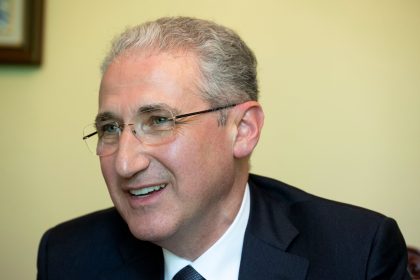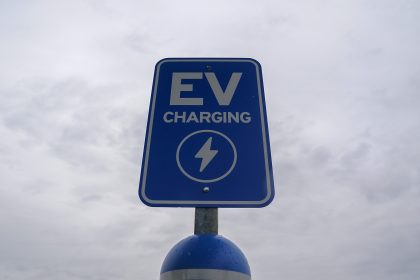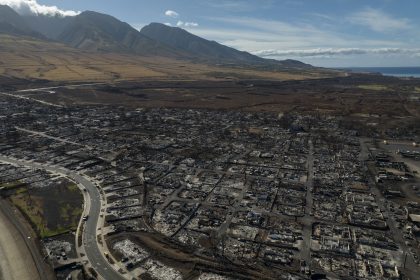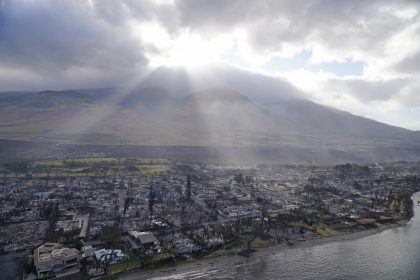Tech Innovation ‘Fundamental Foundation’ of Feasibly Solving Climate Crisis

WASHINGTON — The foundations of what could prove to be the next great innovations in climate change prevention technology were laid out and dissected during a Brookings Institution webinar this week.
Sanjay Patnaik, director of Brookings Center on Regulation and Markets, hosted a virtual discussion on Wednesday with Shantanu Agrawal, president and co-founder of Susteon Inc., to detail how his company works to reduce greenhouse gases in the atmosphere to mitigate the effects of climate change. Susteon is a company that was created to solve industrial problems associated with reducing the levels of CO2 produced across many economic sectors.
Agrawal founded Susteon alongside his business partner, Raghubir Gupta, in January 2018 after the pair discussed technological solutions to the burgeoning pollution problem in New Delhi, India.
Agrawal, armed with two decades worth of experience in startups and private equity as well as a bachelor of science degree in chemical engineering from the Indian Institute of Technology, now operates Susteon with Gupta — who has 30 years of experience in technology research and development in his own right while also boasting a Ph.D. in chemical engineering from the Illinois Institute of Technology.
“The biggest problem I see is that the innovation of technological problem-solving in the climate space is related to more hardware solutions — its energy technology, so it’s really not software,” Agrawal said during the event. “So, the cycle time and the iterative improvements are much longer. That’s the reason why even though we need these solutions right now it’s taking much longer.”
Regardless of other factors, Agrawal said technological innovation is the “fundamental foundation” of feasibly solving the climate crisis. With that comes the widespread integration of emission-reducing and carbon capture technologies like the kinds being commercialized by Susteon.
While emission-reducing technologies are already scaled up for industrial needs and are cost-effective solutions to limiting CO2 gases that trap heat energy in the Earth’s atmosphere, Agrawal said, they still require greater market penetration and investment to make a significant impact on the climate going forward.
Today, humans on Earth collectively emit more than 40 gigatons of carbon annually, and Agrawal said the best way to go about rapidly and significantly cutting down on those emissions is by scaling carbon removal technology in conjunction with carbon-cutting technology.
The United Nations Intergovernmental Panel on Climate Change noted with a high degree of confidence in a 2018 summary report for policymakers that human activities are estimated to already have caused an additional 1.0°C of global warming above pre-industrial levels. However, additional warming is likely to reach 1.5°C between 2030 and 2052 if emissions continue at their current rate.
Should emissions cause planetary warming to surge even more to 2°C, the risks associated with droughts and precipitation deficits are projected to be higher in many regions of the globe, as well as temperature extremes causing extreme heat in some latitudes while causing extreme cold in others, according to the IPCC report. At 2°C warmer than pre-industrial levels, the IPCC estimates with high confidence the number of hot days is projected to increase in most land regions with the most significant increases in the tropics.
“People need to understand that the carbon removal technologies need to scale in parallel because they don’t exist today,” Agrawal said. “They will take their own time to really get to a place where they are making a dent in the gigaton scale of emissions which we make. So, even the most conservative estimates — if you look at what IPCC says — [to prevent] the 2°C estimate, they talk about having five gigatons per annum of carbon removal already in place by 2050.”
The enormity of that figure should not be understated, he said. Today, technology is able to achieve roughly ten thousand tons of carbon dioxide removal from the atmosphere, but the IPCC states that five billion tons of carbon dioxide removal is necessary to stave off a 2°C increase in global temperatures.
When looking at practical methods to solve the climate change crisis around the world, Agrawal said there are three driving mechanisms for change: technology, political will and market incentives.
Technological innovation is already leading entrepreneurs like Agrawal to fast-track net-zero carbon applied science, but the political will of lawmakers — who hold the power to educate swaths of ordinary people on the issue while making necessary regulatory adjustments — is largely absent so far, and accordingly, so are valuable market incentives.
Agrawal used the appeal and applicability of electric cars as an example when discussing the unprecedented shift in momentum needed to accommodate the lofty carbon-cutting ambitions outlined by IPCC. Just as EVs went from obscure to pervasive between 2010 and 2020 because of a shift in consumer desires, carbon capture needs to undertake a similar shift in appeal to keep global emission reduction on track.
“There are spaces where abatement will not be possible,” he said. “Even in 2050, there will be domains in our economy where everybody is signing up to say, ‘Okay, I’m going to be net-zero.’ With so many companies in so many countries, there will be a significant portion of the global economy which will be still emitting greenhouse gases, and forecasts [show] between 5 to 10 gigatons per annum will still be emitted, even with the most aggressive emission reduction. So those things have to be canceled out and that’s why negative emission technologies are a must.”























